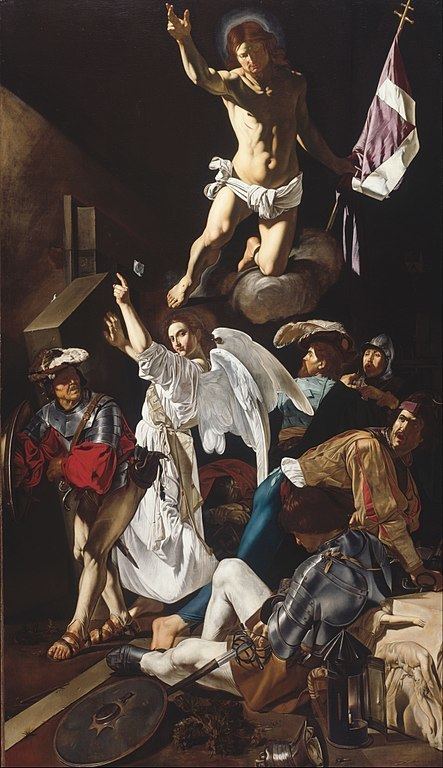Year 1619 Artist Cecco del Caravaggio | Medium Oil on panel Created 1619 | |
 | ||
Dimensions 339 cm × 199 cm (133 in × 78 in) Location Art Institute of Chicago, Chicago, United States Similar Saint Catherine, Annunciation, The Crowning with Thorns, The Raising of Lazarus, John the Baptist (John in t | ||
The Resurrection by Cecco del Caravaggio, the Italian Baroque painter, is the only painting securely documented as his. Through the use of alternate strong lights and deep shadows the chiaroscuro highlights the vividness of the dramatic scene. One of Cecco's most notable works, the painting is in the permanent collection of the Art Institute of Chicago.
Painting
The painting depicts the moment of the resurrection as described in Gospel of Matthew 28:2:
The artwork is a large-scale painting intended for private devotion. It was commissioned in 1619 for Piero Guicciardini, the Tuscan ambassador to Rome, for his private chapel in Florence. The painting was later acquired instead by Cardinal Francesco Barberini for his collection, who was a discerning patron of the arts. The painting has been described as a "powerful and aesthetically pleasing work of art".
The painting depicts the resurrection in a complex composition of twisted bodies before a dark background. Christ is floating above the scene kneeling on a cloud, holding a banner in his left hand, while the angel who lifted the tombstone is standing in profile turning his head victoriously towards the viewer. The soldiers who were assigned to guard the tomb are scattered around. The artist's use of strong and clear colours, combined with the softened muted tones of the nuances, creates an overall balance between the variations of shadow and light typical of the Baroque.
